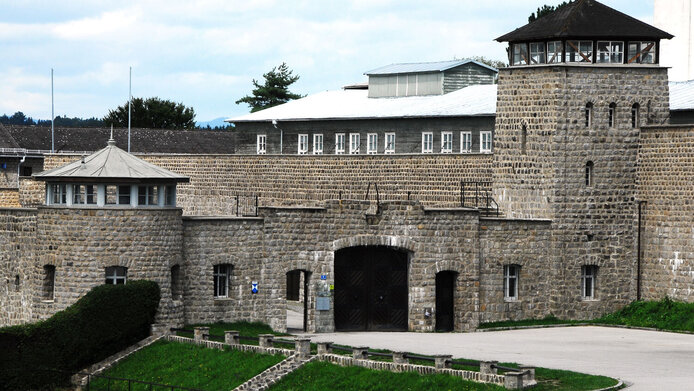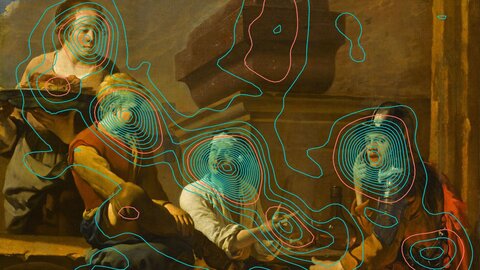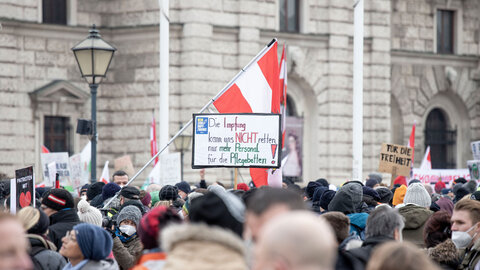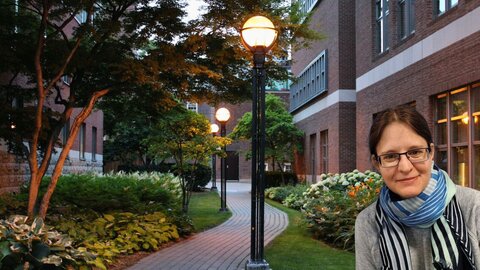“These social situations were multi-layered and complex”

From when it was built in 1938 until it was shut down in 1945, the Mauthausen concentration camp was emblematic of the National Socialists’ reign of terror in “Ostmark”, the official name for Austria during that era. About 190,000 people were deported there. Around 90,000 were murdered in the main camp and its subcamps or died from the effects of imprisonment after being liberated.
For a long time, concentration camps have been considered places where the SS exercised absolute power and brutality. More recent research has reaffirmed the brutality and the horror of course, but has also developed a more nuanced approach, positing that there is no such thing as one single concentration camp experience.
Historian Gerhard Botz, who founded the Ludwig Boltzmann Institute for Historical Social Science and served as its head until 2017, has been studying Mauthausen for decades. Now the third volume of a Mauthausen project is nearing completion, whose core team includes Alexander Prenninger and Regina Fritz. Their most important message: Mauthausen does nottell just one story. Rather, it tells many stories reflecting the various phases of the camp, the large number of prisoner groups and the many differences among the prisoners.
The book series documenting the research project you led focusing on the Mauthausen concentration camp is titled “Europe in Mauthausen”. Why did you choose that as the title?
Gerhard Botz: For a long time, Mauthausen was portrayed as a concentration camp set up by the Nazis where only Austrians were interned. That was originally the SS plan. During the war, however, the camp came to hold people of many nationalities. After all, only slightly more than ten per cent of the prisoners in Mauthausen were German-speaking, and only eleven per cent of those were Austrian. The title “Europe in Mauthausen” seeks to emphasise this diversity.
The project goes back quite a while. Can you give us the rough outlines of the story?
Botz: As early as the 1990s there were plans to conduct interviews with Mauthausen survivors and to make them available to the memorial. The project was launched under the centre-right government led by Federal Chancellor Wolfgang Schüssel. The government saw it as an opportunity to rebut international criticism, as many concentration camp survivors had protested the inclusion of the right-wing Freedom Party in the governing coalition. The tendering process began in 2001 with the aim of contacting survivors of Mauthausen and conducting more than 800 oral history interviews.
A project team led by me and consisting mainly of staff from the Institute for Conflict Research, the Documentation Centre of Austrian Resistance and the Boltzmann Institute for Historical Social Science won the tender. We also enlisted members of the International Oral History Association to help in the project. The Austrian Interior Ministry contributed 80 per cent of the funding, but for a long time there was no funding to enable this treasure trove of data to be systematically researched. But it was not until the Future Fund of the Republic of Austria was set up in 2006 that research funding was secured. The initial results were published in two volumes: Volume 1 (“National Socialist Expansion and Persecution Policy”) lays out the foundations, basic sources and the questions addressed by the project. Volume 2 (“Deported to Mauthausen”) describes why prisoners were sent to Mauthausen and the various routes they took.
You said that Mauthausen prisoners were international. Where did they come from? And did that change in the course of the camp’s existence?
Botz: At first they came from German-speaking countries. Then, each of the Third Reich’s expansion waves resulted in new and completely different groups of people being targeted by the National Socialists. At first, Czechs were deported to Mauthausen, followed by a large number of Poles after the war broke out. Then the expansion to Western and Northern Europe followed. The next wave brought Slovenes, Serbs and Greeks to Mauthausen. The attack on the Soviet Union then meant that many Russians, Ukrainians and other ethnic groups from the Soviet Union were sent to Mauthausen as prisoners of war and forced labourers. They were then joined by prisoners from formerly allied countries such as Italy and Hungary.
From 1944 onwards, women were also brought to Mauthausen, which until then had been a men’s camp. This was also when mass transports from Auschwitz and other camps began. The expansion of Mauthausen during the Third Reich did not follow a predetermined, fixed plan, but resulted from other social and national groups being brought to the camp. Jews and Roma and Sinti were always subjected to persecution regardless of nationality.
Did the function of the camp change over time mirroring the changes in the prisoners’ nationalities?
Botz: The widespread historical view is that Mauthausen predominantly held political prisoners: This is incorrect, as the Nazi persecution policy was not primarily aimed at punishing past deeds, but about eliminating entire groups of people in advance, those who, in the Nazis’ mind, could not or did not want to be socialised into the German Volksgemeinschaft or “community of the people” because of their “nature”. These people were persecuted in Germany starting from 1936-37 as so-called Gemeinschaftsfremde or “social outsiders” and stigmatised as “asocial” or “criminal”. They not only served as cheap labour in the quarries of Mauthausen and Gusen to generate a profit for the SS but were often worked to death in the process.
As the Nazi empire expanded, its persecution policies also intensified. From 1939-40 onwards, more and more people from countries Germany defeated were imprisoned for being non-ethnic Germans, members of the “Eastern peoples” and the so-called “Red Spaniards”, who were all considered dangerous without ever having engaged in any criminal activity. This rationale for persecution, which segregated people according to both racial and social criteria, has been given particular emphasis in recent concentration camp research.
So, the second phase lasts for the first years of the war. Were there any other phases in the history of the Mauthausen concentration camp after that?
Botz: In the third phase, which begins in 1943, the focus shifts to wartime economic interests. Pursuing the policy of “total war” and in light of significant losses, the Third Reich increasingly looked to identify new sources of labour. From 1943 onwards, the concentration camps were increasingly used for arms production. Forced labourers helped offset the labour shortage, thereby changing how the prisoners were viewed. Previously, their value to the SS had been next to nothing; as late as 1941-42, Dutch Jews or Red Spaniards were murdered in large numbers. However, this changed somewhat starting in 1943, because they were needed to work. In Mauthausen, the relative situation for prisoners improved somewhat quite simply because workers were only useful alive.
Did this state of affairs last until the end of the war?
Botz: There was a fourth and final phase when the Nazi regime fell. When the war ended, the number of prisoners once again rose sharply as people were evacuated from other concentration camps and from the now-collapsed Südostwall line of defence south-east of Vienna. Large numbers of Jewish prisoners also arrived at Mauthausen during this phase. The mass murder of prisoners also resumed, as the supply of basic necessities completely dried up. Yet, the gas chamber remained in operation almost to the end. The last year was the worst and most chaotic period. This terrible final phase has long shaped the image of Mauthausen and has also influenced the way we remember it today.
In what way?
Botz: In this phase, it was mainly young, physically strong, better-fed prisoners who survived and were able to scrounge more food for themselves. These are the people who spread the word about the camps after the war. Many of the old, the sick and the weak, termed Muselmänner by the camp prisoners, had died by the fourth phase and could no longer tell their stories. Much of what happened during this time, such as cannibalism due to hunger, violence among the prisoners in the camp and during liberation, the lynching of Kapos who came to be seen as evil, was more or less a taboo subject after 1945 (in our society as well and even among most of the research community). All of these circumstances are at least hinted at in our interviews. As an oral historian, you have to take that into account.
That means that in oral histories you also have to consider who and what can no longer be heard?
Botz: Oral histories often tell the story of horrific individual experiences. But there is a danger of assigning generalised validity to these stories when they are told only by individual prisoners. Experiences in the concentration camps in general and in Mauthausen in particular covered a broad spectrum. Serbian or Soviet prisoners were treated differently than Jewish women, French prisoners or Catholic Austrians. The experiences of concentration camps prisoners differed depending on their group.





